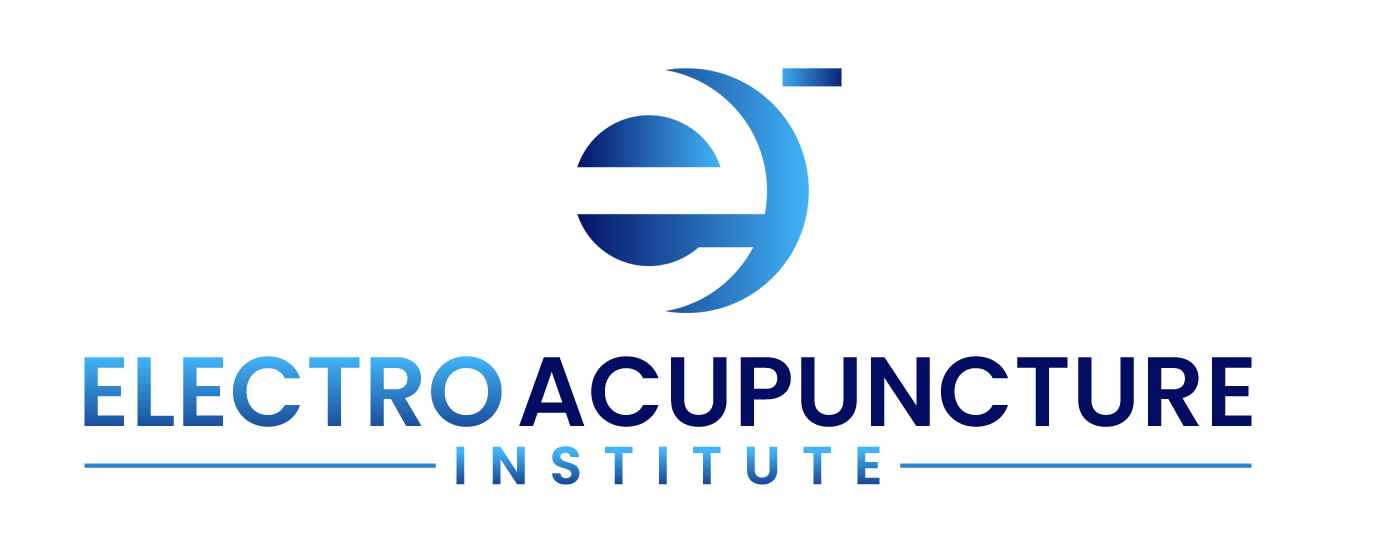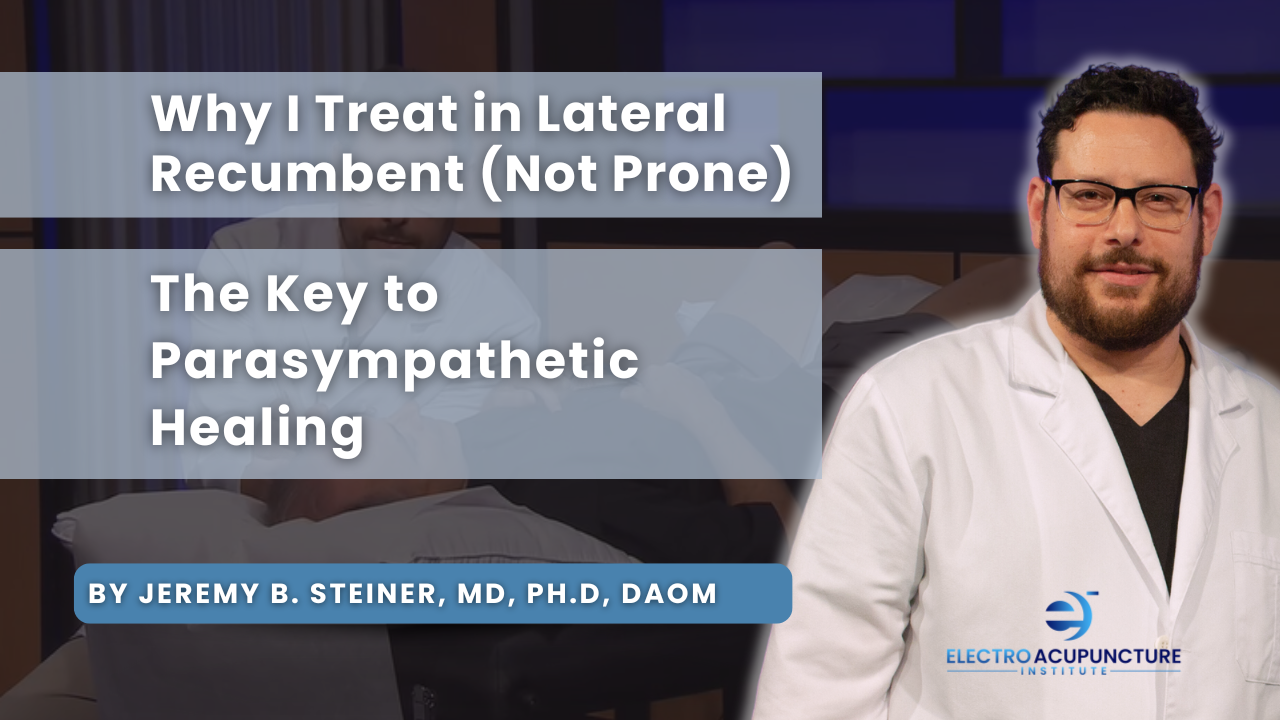Why Lateral Recumbent Electro Acupuncture Changes Everything
Lateral recumbent electro acupuncture is one of the simplest ways to shift a patient’s nervous system into a healing state. People always ask me:
“Why lateral recumbent? Why not prone like we usually do for the spine?”
Here’s the deal—prone positioning often triggers sympathetic dominance.
Not in every patient, but in enough that it matters.
And what we’re really trying to do here is get the nervous system into a parasympathetic, healing state—that “rest, repair, digest” mode where the body actually does its work.
If you throw someone prone, there’s a good chance you’re working against that.
So when I’m doing spinal bracketing or any neuro-level electro acupuncture work, I treat either supine or lateral recumbent.
Lateral recumbent is my go-to setup. You can do it straight up like in the demo, or modified—about a 45-degree angle—with a few pillows.
Honestly, I just grab the normal pillows we have in the room, five or six of them, and get the patient super comfortable.
That’s the key: comfort = parasympathetic activation.
⚡ Download the Free Setup Guide
Take what you see in the video and start using it right away with my detailed reference:
The Lateral Recumbent Electro Acupuncture Setup Explained
Here’s how I structure this in practice:
6-Needle Bracket:
-
Red = Wato (where your needles go)
-
Green = diagnostic center
-
Slide the bracket up or down the spine depending on what level you’re treating.
10-Needle Bracket (Lower Voltage Devices):
-
Carrier needles on top and bottom
-
Treatment pair in the middle
-
Designed for systems with less penetration depth
High-Voltage Devices:
You can often get away with one or two needles per bracket when performing lateral recumbent electro acupuncture.
We’re leveraging the Du Channel’s upward flow.
If your diagnosis is L2, go one or two vertebrae lower when you treat.
Electricity will flow upward through the Du Channel and exit through the deficient spinal nerves—whether you were perfect on your counting or not.
Carrier Frequency vs. Treatment Frequency in Electro Acupuncture
Carrier frequency is the fastest frequency on your device—it reduces electrical resistance around the needle.
Treatment frequency—the slower one, around 1–5 Hz—is where you get β-endorphin and ACTH release, helping with both pain modulation and neuro-endocrine balance.
I often set my high-voltage units at 4.6 Hz—right in that sweet spot.
If you’re running high voltage, don’t overthink it. Two frequencies are enough to create a blanketing harmonic resonance—the body will select what it needs.
Think of it like waking up to construction noise: the sounds were there all night, but your brain filtered them out until you were awake. The nervous system does the same with frequency—it tunes to what it needs and ignores the rest.
Hardware, Fusions, and Oblique Needling During Lateral Recumbent Electro Acupuncture
If your patient has rods, screws, or hardware, treat the same region—just change your angle.
Go a little more lateral or insert obliquely to slide beneath the resistance layer.
I’ll use a 60 mm needle and still call it Wato even if the needle’s oblique instead of perpendicular.
Goal: bypass the resistance, reach the fascia, and let the current flow.
Should the Patient Feel the Stimulation?
It depends on your device:
-
Low-voltage systems: yes, they should feel it—this confirms current penetration.
-
High-voltage systems: they don’t need to feel anything; at two volts, current’s already inside the body.
Either way, you’re good.
Short Sympathetic Treatments in Electro Acupuncture
Occasionally, you’ll want sympathetic activation—like right before competition.
If you’re treating fighters or athletes, a < 12-minute session boosts fight-or-flight readiness.
Otherwise, we stay parasympathetic for healing.
TENS Pads and Voltage Warnings in Lateral Recumbent Treatments
If you’re running a high-voltage system, you can use TENS pads—just remove the inline resistors first.
If you’re on low voltage, skip it. Current won’t get past the skin.
And never use generic TENS units in clinical work—they push too much current, too little voltage, stay superficial, and can damage tissue.
I’ve seen diabetic neuropathy patients burn out nerves because they kept turning it up, thinking “stronger is better.”
It’s not. Use proper electro acupuncture devices built for clinical work.
Bringing It All Together
Here’s what to remember:
-
Lateral recumbent electro acupuncture promotes parasympathetic healing.
-
Prone positioning can activate sympathetic dominance.
-
Adjust your bracket placement to match diagnosis.
-
Pair carrier + treatment frequencies for resonance.
-
Modify technique for patients with spinal hardware.
-
Skip cheap TENS units—trust your clinical systems.
And most importantly — have fun with it.
Play, experiment, and watch how fast the body responds when you stop fighting its natural state.
⚡ Download the Free Setup Guide
Take what you see in the video and start using it right away with my detailed reference:
Want to see the full demonstration in action?
Watch it now on our YouTube channel.





